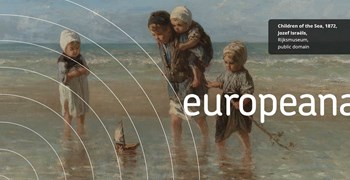Silly season or cucumber time – 3 fun cultural activities for the summer
The time of the year, usually in the summer, when not much is happening in the politics is called silly season in English. Due to a lack of newsworthy events to report on during the summer, the media focus on trivial and frivolous matters and hoax stories, as explained in the Brewer’s Dictionary of Phrase & Fable from 1898:
The Silly Season for daily newspapers, is when Parliament is not in session, and all sorts of “silly” stuff are vamped-up for padding. Also called the “Big Gooseberry Season,” because paragraphs are often inserted on this subject.

A small man is holding a spoon with a gooseberry on it and pointing it towards the large face of another man, Wellcome Library, CC BY
Another name of this time of the year is cucumber time originating from cucumbers being in season during summer months. The Brewer’s Dictionary makes a connection between cucumber time – the time when gentry leaves the city and go to the countryside to enjoy summer and tailors’ difficulties with finding work
Cucumber time – The dull season in the tailoring trade. The Germans call it Die saure Gurken Zeit (pickled gherkin time). Hence the expression Tailors are vegetarians, because they live on “cucumber” when without work, and on “cabbage” when in full employ.
The term cucumber time is used in many European languages – komkommertijd in Dutch, agurktid in Norwegian, sezon ogòrkowy in Polish, okurková sezóna in Czech, hapukurgihooaeg in Estonian,, Hungarian uborkaszezon in Hungarian. Yet, instead of cucumbers Swedes have the nyhetstorka (news drought) while French refer to la morte-saison – the dead season.

Uit den komkommertijd, International Institute of Social History, public domain
Luckily there are ways to avoid the dull news and TV shows reruns. Of course, you can go outside, explore, play sports, meet with friends. But if you can’t imagine your life without looking at a screen, we have a perfect solution for you! We’ve selected some easy to digest content from Europeana to match the summer vibes and bring you some enjoyment:
1. Explore cucumbers, gherkins, pickles available on Europeana:
Are you’re looking for a cucumber-inspired aesthetic experience? Or maybe you aim to achieve a complete state of perfection in the cultivation of cucumbers? Even if you don’t, this is your unique opportunity to consciously and intentionally discover cultural heritage content related to cucumbers. Enjoy it here!

Still Life with Pumpkins and Cucumbers, Štefan Michal-Vörös Izbighy, Slovak National Gallery, public domain


Left: Cucumber, flowering stem with separate fruit and seeds. Coloured etching by M. Bouchard, 1772, Wellcome Library, public domain, Right: The art of promoting the growth of the cucumber and melon; in a series of directions for the best means to be adopted in bringing them to a complete state of perfection, Thomas Watkins, Library of Congress, public domain
2. Visit an exhibition or a gallery
No need to move away from the poolside:
The Past But Not As You Know It – includes cute animals, unusual professions and retro celebrities

Holiday snapshots – people enjoying holidays and doing the same things as you, but in different times and places

European landscapes and landmarks – beautiful landscapes, better colours than on Instagram filters. No hot dog legs, ‘follow me’ hands or ice creams obstructing the view

3. Create a meme
Does cucumber time exist in the meme world? We don’t know, but aren’t you bored with the Success Kid and Forever Alone? Get ready for the #MuseumMeme on August 22nd and create new awesome memes using openly licensed images available on Europeana, for example, vintage cartoons.

The Wellcome Library, CC BY, Caption by Klara Sielicka-Baryłka (Państwowe Muzeum Etnograficzne)












